Related Research Articles
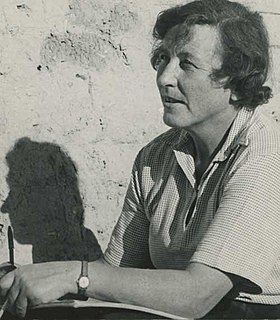
Dame Kathleen Mary Kenyon, was a British archaeologist of Neolithic culture in the Fertile Crescent. She led excavations of Tell es-Sultan, the site of ancient Jericho, from 1952 to 1958, and has been called one of the most influential archaeologists of the 20th century. She was Principal of St Hugh's College, Oxford, from 1962 to 1973 and studied herself at Somerville College, Oxford.

The City of David is the name given to an archaeological site considered by most scholars to be the original settlement core of Jerusalem during the Bronze and Iron Ages. It is situated on southern part of the eastern ridge of ancient Jerusalem, west of the Kidron Valley and east of the Tyropoeon valley, to the immediate south of the Temple Mount.
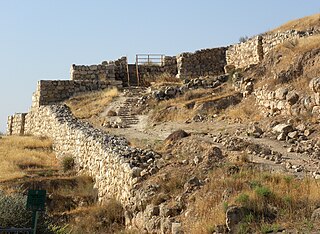
Lachish was an ancient Canaanite and Israelite city in the Shephelah region of Israel, on the South bank of the Lakhish River, mentioned several times in the Hebrew Bible. The current tell (ruin) by that name, known as Tel Lachish or Tell ed-Duweir ,, has been identified with the biblical Lachish. Today, it is an Israeli national park operated and maintained by the Israel Nature and Parks Authority. The park was established on lands of the depopulated Palestinian village of Qobebet Ibn ‘Awwad which was north of the Tel. It lies near the present-day moshav of Lakhish.

In archaeology, a tell or tel, is an artificial topographical feature, a species of mound consisting of the accumulated and stratified debris of a succession of consecutive settlements at the same site, the refuse of generations of people who built and inhabited them, and of natural sediment.

Tel Megiddo is the site of the ancient city of Megiddo, the remains of which form a tell, situated in northern Israel near Kibbutz Megiddo, about 30 km south-east of Haifa. Megiddo is known for its historical, geographical, and theological importance, especially under its Greek name Armageddon. During the Bronze Age, Megiddo was an important Canaanite city-state and during the Iron Age, a royal city in the Kingdom of Israel.
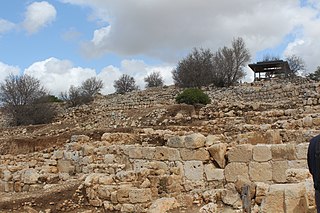
Shiloh was an ancient city and sanctuary in Samaria. According to the Hebrew Bible, Shiloh was the central sanctuary of the Israelites during the pre-monarchic period, before the First Temple in Jerusalem was built. After the Israelite conquest of Canaan, the Tabernacle was moved to Shiloh, and remained there during the period of the biblical judges.

Israel Finkelstein is an Israeli archaeologist, professor emeritus at Tel Aviv University and the head of the School of Archaeology and Maritime Cultures at the University of Haifa. Finkelstein is active in the archaeology of the Levant and is an applicant of archaeological data in reconstructing biblical history. He is also known for applying the exact and life sciences in archaeological and historical reconstruction. Finkelstein is the current excavator of Megiddo, a key site for the study of the Bronze and Iron Ages in the Levant.

Kinneret is the name of an important Bronze and Iron Age city situated on the northwestern shore of the Sea of Galilee, mentioned in the 14th century BC Aqhat Epic of Ugarit, and in the Old Testament and New Testament. Older Bible translations spell the name alternatively Kinnereth or Chinnereth, and sometimes in the plural as Chinneroth. In time the name became Gennesaret and Ginosar. The remains of Kinneret have been excavated at a site called Tell el-'Oreimeh in Arabic and Tel Kinrot in Modern Hebrew.

The United Monarchy is the name given to the united Israelite kingdom of Israel and Judah during the reigns of Saul, David, and Solomon, as depicted in the Hebrew Bible. It is traditionally dated to have lasted between 1047 BCE and 930 BCE. On the succession of Solomon's son Rehoboam in c. 930 BCE, the Biblical account reports that the country split into two kingdoms: the Kingdom of Israel in the north and the Kingdom of Judah in the south.

Tel Arad is an archaeological tel, or mound, located west of the Dead Sea, about 10 kilometres west of the modern Israeli city of Arad in an area surrounded by mountain ridges which is known as the Arad Plain. The site is divided into a lower city and an upper hill.
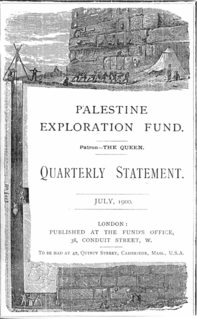
The Palestine Exploration Fund is a British society based in London. It was founded in 1865, shortly after the completion of the Ordnance Survey of Jerusalem, and is the oldest known organization in the world created specifically for the study of the Levant region, also known as Palestine. Often simply known as the PEF, its initial objective was to carry out surveys of the topography and ethnography of Ottoman Palestine – producing the PEF Survey of Palestine – with a remit that fell somewhere between an expeditionary survey and military intelligence gathering. It had a complex relationship with Corps of Royal Engineers, and its members sent back reports on the need to salvage and modernise the region.

Kedesh was an ancient Canaanite and later Israelite settlement in Upper Galilee, mentioned few times in the Hebrew Bible. Its remains are located in Tel Kedesh, 3 km northeast of the modern Kibbutz Malkiya in Israel on the Israeli-Lebanese border.
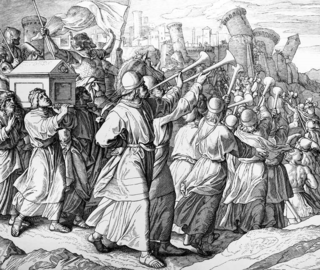
The Battle of Jericho, as described in the Biblical, Book of Joshua, was the first battle fought by the Israelites in the course of the conquest of Canaan. According to Joshua 6:1–27, the walls of Jericho fell after the Israelites marched around the city walls once a day for six days and seven times on the seventh day then blew their trumpets. Excavations at Tell es-Sultan, the biblical Jericho, have failed to substantiate this story, which has its origins in the nationalist propaganda of much later kings of Judah and their claims to the territory of the Kingdom of Israel. The lack of archaeological evidence and the composition, history and theological purposes of the Book of Joshua have led archaeologists like William G. Dever to characterise the story of the fall of Jericho as "invented out of whole cloth".

Gath or Gat, often referred to as Gath of the Philistines, was a major Philistine city and one of the five Philistine city-states, established in northeastern Philistia. Gath is often mentioned in the Hebrew Bible and its existence is confirmed by Egyptian inscriptions. Gath is believed to be mentioned in the El-Amarna letters as Gimti/Gintu, ruled by the two Shuwardata and 'Abdi-Ashtarti. Another Gath, known as Ginti-kirmil also appears in the Amarna letters.
David Ussishkin is an Israeli archaeologist and professor emeritus of archaeology.
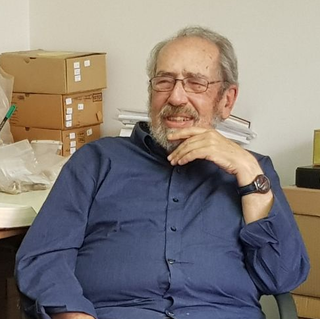
Gabriel Barkay is an Israeli archaeologist.

Ephraim Stern was an Israeli archaeologist and professor at the Hebrew University of Jerusalem. He specialized in the archaeology of ancient Israel and Judah and Phoenicia, and was known for his excavations at Tel Dor (1980–2000).
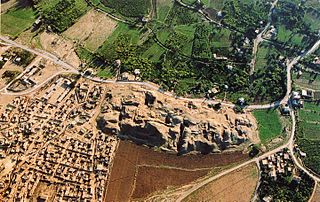
Tell es-Sultan, also known as Tel Jericho or Ancient Jericho, is a UNESCO-nominated archaeological site in the West Bank, located adjacent to the Ein as-Sultan refugee camp two kilometres north of the centre of Jericho. The tell was inhabited from the 10th millennium BCE, and has been called "the oldest town in the world", with many significant archaeological finds; the site is also notable for its role in the history of Levantine archaeology.
The Book of Joshua lists almost 400 ancient Levantine city names which refer to over 300 distinct locations in Israel, the West Bank, Jordan, Lebanon and Syria. Each of those cities, with minor exceptions is placed in one of the 12 regions, according to the tribes of Israel and in most cases additional details like neighbouring towns or geographical landmarks are provided. It has been serving as one of the primary sources for identifying and locating a number of Middle Bronze to Iron Age Levantine cities mentioned in ancient Egyptian and Canaanite documents, most notably in the Amarna correspondence.
References
- ↑ Simons, Jan Jozef (1952). Jerusalem in the Old Testament: Researches and Theories. Brill.
- ↑ Hjelm, Ingrid; Thompson, Thomas L. (22 February 2016). History, Archaeology and The Bible Forty Years After Historicity: Changing Perspectives 6. Taylor & Francis. pp. 114–. ISBN 978-1-317-42814-5.
- ↑ Wagemakers, Bart (28 February 2014). Archaeology in the 'Land of Tells and Ruins': A History of Excavations in the Holy Land Inspired by the Photographs and Accounts of Leo Boer. Oxbow Books. ISBN 978-1-78297-246-4.
- ↑ Hamilton, R. W. (1949). The structural history of the Aqsa Mosque: a record of archaeological gleanings from the repairs of 1938-1942. London: Oxford University Press (for the Government of Palestine by Geoffrey Cumberlege). OCLC 755287785. ( OCLC 913480179)
- ↑ Yuval Baruch, Ronny Reich & Débora Sandhaus. "A Decade of Archaeological Exploration on the Temple Mount, Tel Aviv". Tel Aviv. 45 (1): 3–22. doi:10.1080/03344355.2018.1412057. S2CID 166015732.